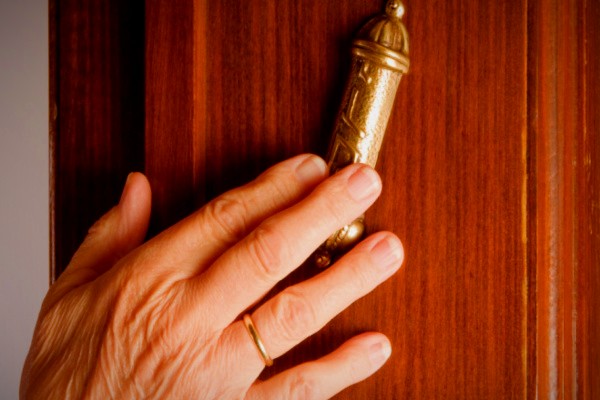Mezuza’s an easy mitzva, yet there’s a biblical story in which it was used to discourage a potential convert.
By Rabbi Ari Enkin, Rabbinic Director, United with Israel
This week’s Torah portion is “Va’etchanan” Deuteronomy 3:23-7:11 and it contains the famous Shema prayer, the sacred declaration of faith that we recite twice every day.
Included in the Shema, twice in fact, is the requirement to place a mezuza on our doorposts. The mezuza is a scroll upon which is written the first two chapters of the Shema. As it says, “And you should inscribe them on the doorposts of your house and upon your gates” (Deuteronomy 6:9).
A mezuza is considered to be the third most sacred ritual item following a Torah scroll and the tefillin. It is a scroll handwritten by a scribe, following dozens of laws, to ensure that the scroll is kosher. The scroll is then rolled up and usually placed inside a decorative and protective case and then affixed to the right doorpost of most doorways.
Indeed, the word mezuza in Hebrew means “doorpost.”
The mitzva of mezuza is observed, to some extent, by virtually all Jews regardless of their regular level of observance. What is it about this mitzva that it has such a “wide following?” Furthermore, wouldn’t “small holy scroll” or something of that nature be a more logical the name for the mitzva rather than to call the mitzva “doorpost”?
Let’s take a look.
In the Book of Ruth, which partly takes place in the land of Moab, we have the story of Ruth and her mother-in-law, Naomi. As Naomi prepares to leave Moab and return to the land of Israel, she tells Ruth to stay in her homeland. She also encourages her to remain the Moabite princess that she is, and not consider converting to Judaism. (That’s right, we actually discourage conversion rather than going knocking on door to encourage it. More about this another time.)
In order to better discourage Ruth from converting, Naomi mentions several “difficult” commandments that Jews are required to observe. One such commandment was the mitzva of mezuza.
Huh? A difficult mitzva? It’s one of the easiest! Expensive, perhaps not, but certainly not complex. Put the mezuza up, check the parchment every few years and that’s it. Once its up, you have accomplish a 24/7 mitzvah
So why exactly did mezuza make Naomi’s llist of “difficult mitzvot”?
As they say, a person’s home is his castle.
People like to personalize their homes and or identify their homes with certain designs or decorations. Many people somehow affix their family name to the doors of their home to identify the home as theirs to passersby. The mezuza is very similar. By placing a mezuza on our doorposts, a person is affixing God and His name to the doorpost.
The mezuza declares that no matter what name is on the door, God is to be the first thoughts when entering the home.
Ruth was a Moabite princess. She lived in the palace. She was used to be the supreme ruler of her without a need to answer to any other. Naomi was hoping that the idea of having to defer to God as the supreme ruler of the home would turn her off of Judaism.
Thankfully her plan didn’t work or King David may not have ever been born!
So now we can understand why the mitzva of mezuza was on the list of “difficult” mitzvot.
It is a mitzva that reminds us that it is God who controls our home, not the homeowner.
In the home, we eat what God says we can eat, we rest when God says we can rest, and we conduct our daily and intimate routines in the way that God wants us to.
The mezuza reminds us of who we are and what is important. And this is why almost all Jews affix a mezuza to their door…it is a badge of honor of belonging to the Jewish people.
